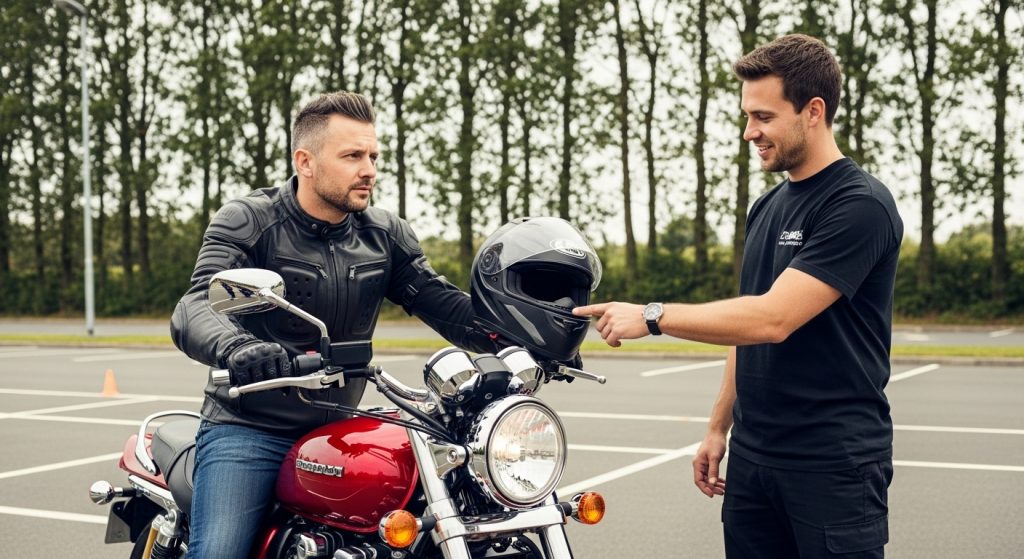Riding a motorcycle offers freedom, adrenaline, and a deep connection to the road—but it also demands skill, awareness, and preparation. Enrolling in a motorcycle driving school is one of the smartest steps a new rider can take, especially in a state like Montana, where terrain can vary dramatically and conditions change fast.
Here are five safety habits that every rider will develop through structured training—habits that can make all the difference on the open road.

1. Mastering the Controls Without Thinking Twice
One of the first skills taught at any certified course is how to use the throttle, clutch, brakes, and gears fluidly and instinctively. Studies show that riders who complete a training program are significantly less likely to be involved in crashes caused by operator error, especially in their first year of riding, according to the Motorcycle Safety Foundation (MSF) RiderCourse data.
One of the few tips and tricks that a new motorcycle rider needs to know is to build muscle memory before hitting traffic—something a formal course enforces with repetition and controlled practice environments.
2. Scanning and Situational Awareness
Motorcyclists are harder to see and more vulnerable in traffic. That’s why driving schools teach constant scanning techniques: checking mirrors, evaluating blind spots, and watching for vehicle movement cues. According to the National Highway Traffic Safety Administration (NHTSA), 41% of fatal motorcycle crashes involve another vehicle turning left into a motorcyclist’s path, usually because they didn’t see them.
You’ll learn how to position yourself for maximum visibility and anticipate threats before they happen, dramatically improving your odds on the road.

3. Maintaining a Safe Following Distance
What is the proper following distance behind a motorcyclist? The MSF recommends at least a two-second gap behind vehicles in ideal conditions, and more in poor weather or low-traction areas. This gives you enough time to react if the vehicle ahead stops suddenly.
In Montana, where rural roads often include gravel, wildlife crossings, or wind gusts, that buffer zone becomes even more critical. According to the Montana Department of Transportation (MDT) crash reports, riders who maintain spacing are far less likely to be involved in rear-end or loss-of-control accidents.
4. Emergency Maneuvers and Hazard Avoidance
Formal training includes controlled braking, obstacle avoidance, and swerve drills, which are critical in the real world. Research published by the MSF shows that riders trained in these techniques can avoid 85% of scenarios that would otherwise result in a crash.
In Montana, these skills are especially relevant, with rural highways where you might encounter deer, loose debris, or sudden weather changes within minutes.
5. The Mental Game: Staying Calm and Predictable
Emotional control is one of the most underrated safety habits. Motorcycle driving schools emphasize mental discipline—staying alert, managing stress, and avoiding overreactions. Predictable riders are safer riders; this is echoed in NHTSA guidelines that stress the importance of consistent signaling and lane behavior.
Fatigue is another mental hazard. Long Montana rides can dull your senses, so you’ll learn how to recognize mental drift and apply techniques to stay sharp on extended routes.
Whether you’re a new rider or looking to sharpen your skills, mastering the fundamentals of motorcycle safety can significantly reduce your risk of accidents and increase your confidence on every ride.
For a deeper dive into real-world best practices and riding strategies, read:
Motorcycle Riding Skills & Safety Best Practices – Ride Smart, Stay Safe.
Why MMSF Matters in Montana
At MMSF, we believe safety is a lifelong habit. Whether you’re navigating your first twisty highway or passing along wisdom to the next generation, we’re here to support your journey with training, advocacy, and real-world tools.
Because riding isn’t just about getting there—it’s about getting there safely, every time.

